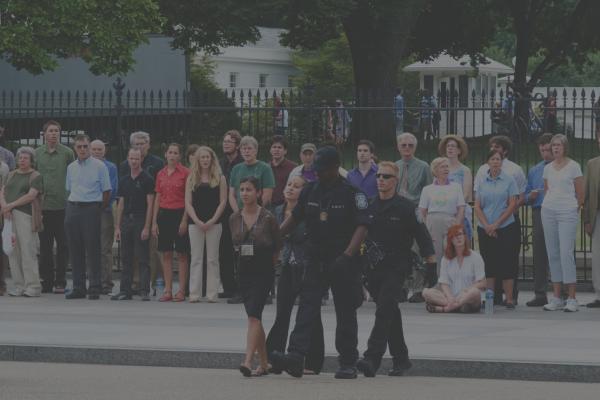They said it was a fool’s errand.
They said there was too much money on the other side.
They said the politics were too difficult.
And yet here we are.
As my friend Bill McKibben wrote in 2011, our indigenous brothers and sisters in Canada had been fighting the Keystone XL pipeline for years. But before August 2011, virtually no one in the U.S. had even heard of it.
Then I read the pastoral letter from Alberta’s Bishop Luc Bouchard, The Integrity of Creation and the Athabasca Oil Sands, and I felt the Spirit calling me to action.
We put out a call to religious leaders to join the Tar Sands Blockade in Washington, D.C., in the summer of 2011. It was hot. It was humid. It was summer in D.C. But hundreds and hundreds of Protestant pastors, rabbis, Buddhist priests, Franciscans, Unitarians, and Christians of all stripes said they would come.
One the day of the arrests, 145 religious leaders, artists, and students were arrested in front of the White House to bring attention to the Keystone XL pipeline, a linchpin in the battle for climate justice. My police wristband showed that I was number 49.
That day we were able to push the number of arrests over the week beyond 500. By the end of two weeks more people had been arrested for climate justice than anytime since the 1960s.
And even after that first beautiful sign of what our movement was capable of, nearly 92 percent of ‘environment and energy insiders’ polled by National Journal said that the pipeline would be approved. It was a done deal — signed, sealed, and delivered. The overwhelming conventional wisdom of “pragmatic” observers was that the idea of stopping the pipeline was laughable, completely ludicrous.
But no one gave up — instead we just fought harder, doggedly and uphill, for four long years. The movement to block Keystone brought together elders and college students, people of all faiths and no faith, even Indians and cowboys. People of all ages and backgrounds and beliefs realized their own power and became part of the fight by contributing however they could — from petitions and phone calls to bird-dogging and blockades. The diversity of the movement along so many lines was crucial to success, as was the willingness of so many to take risks and to even put their bodies on the line.
Rejecting this huge pipeline is a huge blow against the Athabascan tar sands, one of the dirtiest sources of fossil fuels on the entire planet. But the ripple effects of this decision reach far beyond Alberta. President Obama has become the first world leader to reject a project on the basis of climate concerns. He even directly adopted the framing of pipeline fighters by acknowledging the importance of “keeping it in the ground:”
“If we’re going to prevent large parts of this Earth from becoming not only inhospitable but uninhabitable in our lifetimes, we’re going to have to keep some fossil fuels in the ground, rather than burn them and release more dangerous pollution into the sky.”
President Obama’s rejection of the Keystone XL pipeline is perhaps the clearest sign yet of what a brave, diverse, people-powered climate movement can achieve.
For seven years, we have been praying for “no KXL.” They said it would take a miracle and a miracle is what God provided.
There will be many more battles to save a livable climate for God’s creation — for God’s creatures and for our children and grandchildren and all the future generations to come after them. There will be more pipelines and infrastructure projects to stop. But now is a time for celebration and gratitude.
Thanks to Rick Herron for contributing to this article.
Got something to say about what you're reading? We value your feedback!

